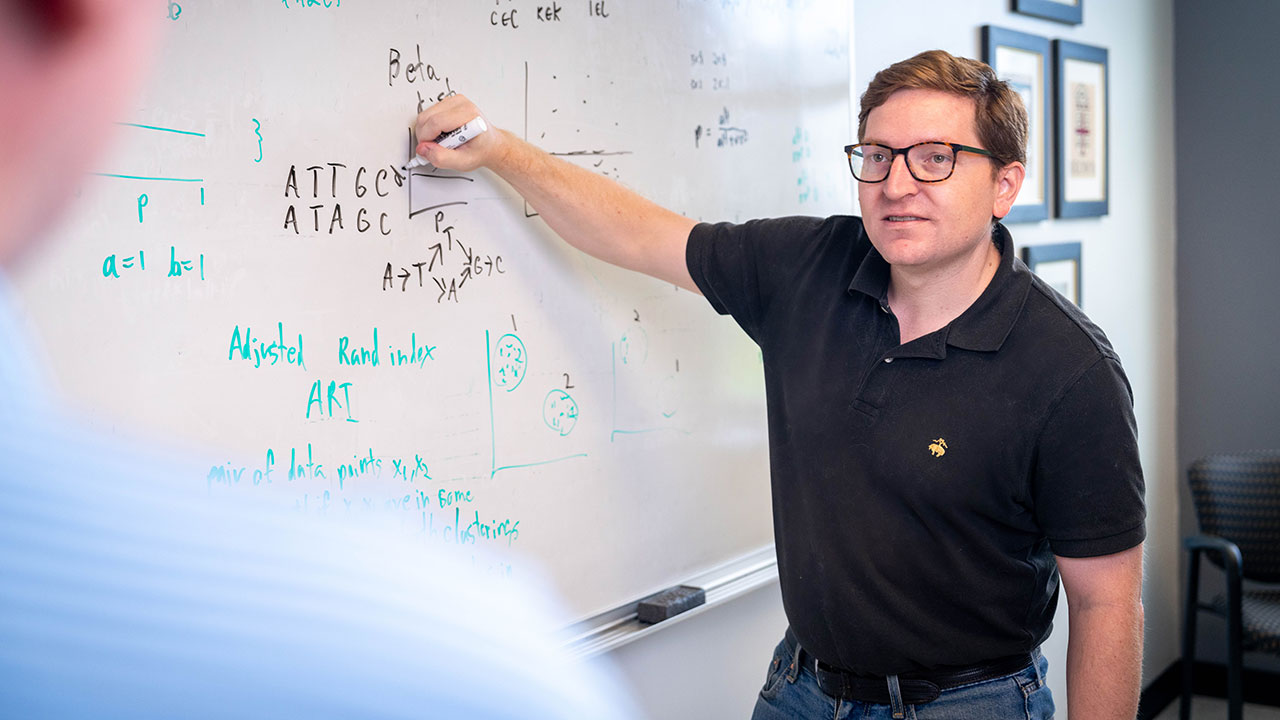Software developed by assistant professor in computer science and software engineering being used in breakthrough technique to identify leukemia cells
Published: Sep 4, 2024 10:15 AM
By Joe McAdory
Dr. Haynes Heaton, an assistant professor in the Department of Computer Science and Software Engineering, has developed software which likely will change the standard of care for leukemia patients undergoing bone marrow transplants.
By using his software, “cellector,” Heaton and fellow researchers hope to replace current diagnostics for post-bone marrow transplant relapse monitoring with a new technology, single-cell RNA sequencing. Heaton and collaborators at the Fred Hutchinson Cancer Center at the University of Washington were awarded a $3.5 million grant from the National Institute of Health for their project, “A Compass for Those With Relapsed Leukemia After Transplants.”
Single-cell RNA sequencing, created by biotechnology company 10x Genomics, is the new technology that has revolutionized how biology is studied in the modern era. This sequences the RNA from each cell — attaching a barcode of DNA on each sequence to indicate where it came from.
“It allows us to study more closely what genes the cell is expressing, how they are interacting with each other and the differentiation and development process,” said Heaton, who worked at 10x Genomics from 2014-2017 developing algorithms to unlock valuable information from this revolutionary technology.
“So far, single-cell RNA sequencing has been primarily used in research, but our study aims to bring this exciting new technology to the clinic as a diagnostic for the presence of leukemia cells in a patient’s body after treatment.”
However, this data is sparse, requiring a new computational tool to accurately assign cells to individuals. Enter the cellector, which makes statistical distributions from thousands of pieces of data accrued.
Using a beta-binomial iterative anomaly detection system, cellector accurately distinguishes donor bone marrow cells from user bone marrow cells among transplant recipients to within .05%. Previous methods, Heaton said, struggled to accurately distinguish these cells to within 2% – making clinical decisions difficult.
“This is important because if a patient’s blood is being generated from his or her own bone marrow — their own genotype — then that person very well might be having a leukemia relapse, which is highly deadly,” Heaton said.
Bone marrow transplant recipients must be re-evaluated approximately every six months, via biopsies — multi-flow parameter cytometry (MPC) — in search of measurable residual disease (MRD) to ensure a relapse has not begun.
“Multi-flow parameter cytometry is the gold standard in detecting relative cell abundance, as well as cell surface markers indicative of leukemia,” said Heaton, who earned an MD at Brown University before earning a PhD in computational biology from the University of Cambridge. “However, it is much less sensitive and is unable to detect very low rates of disease."
As a computer scientist, computational biologist and medical doctor, Heaton’s latest research project allows him to combine his disciplines and develop a computational diagnostic tool capable of saving lives.
“The basic research that I do is empowering other people to do better research that is tied to DNA sequencing, and we will have health impacts down the line,” he said. “This project creates a new diagnostic tool that will lead to early detection of leukemia relapses, will drive clinical decisions and help save lives. I think that’s awesome.”
Media Contact: , jem0040@auburn.edu, 334.844.3447
Haynes Heaton and collaborators were awarded a $3.5 million grant from the National Institute of Health for their project, "A Compass for Those With Relapsed Leukemia After Transplants."


